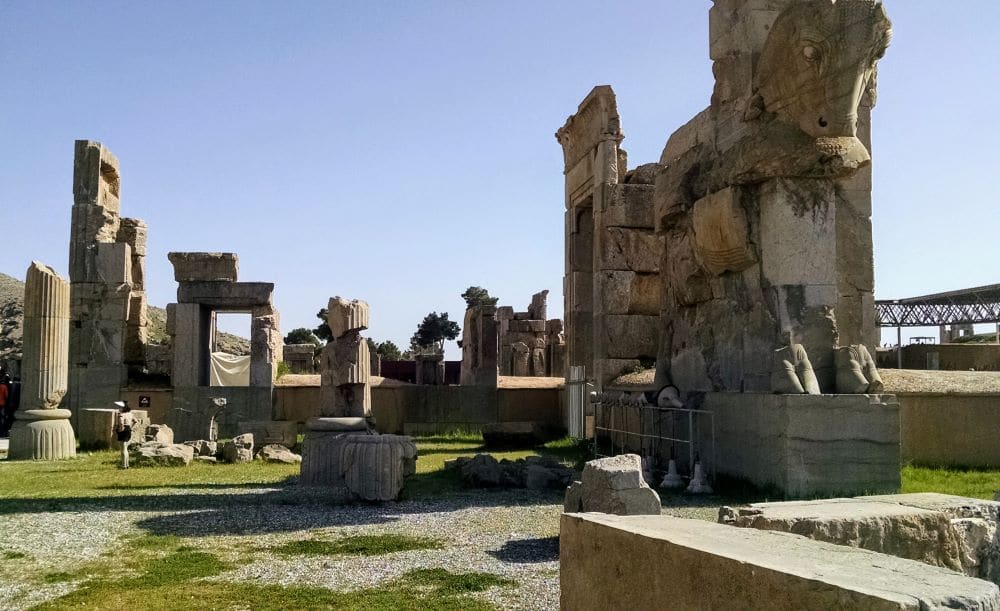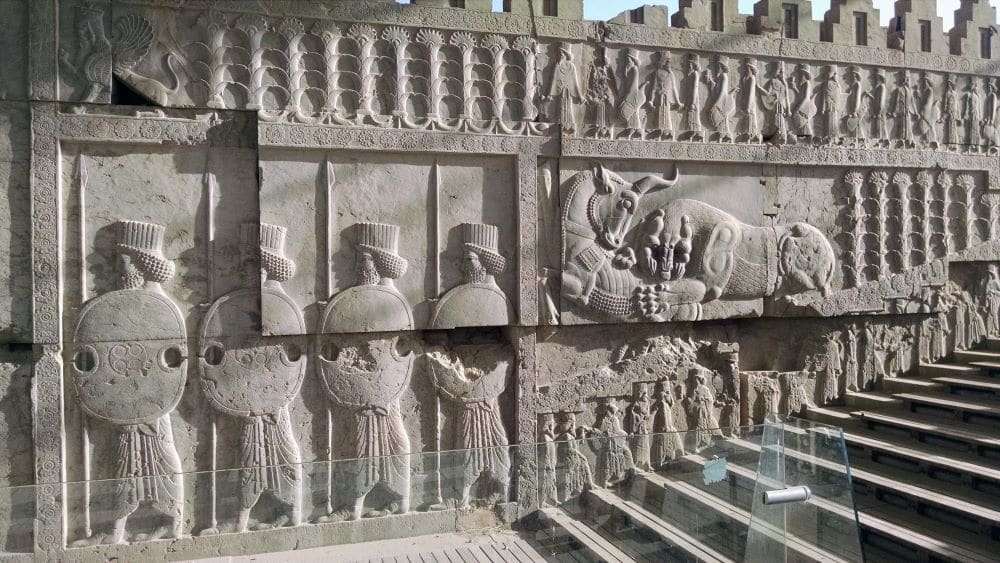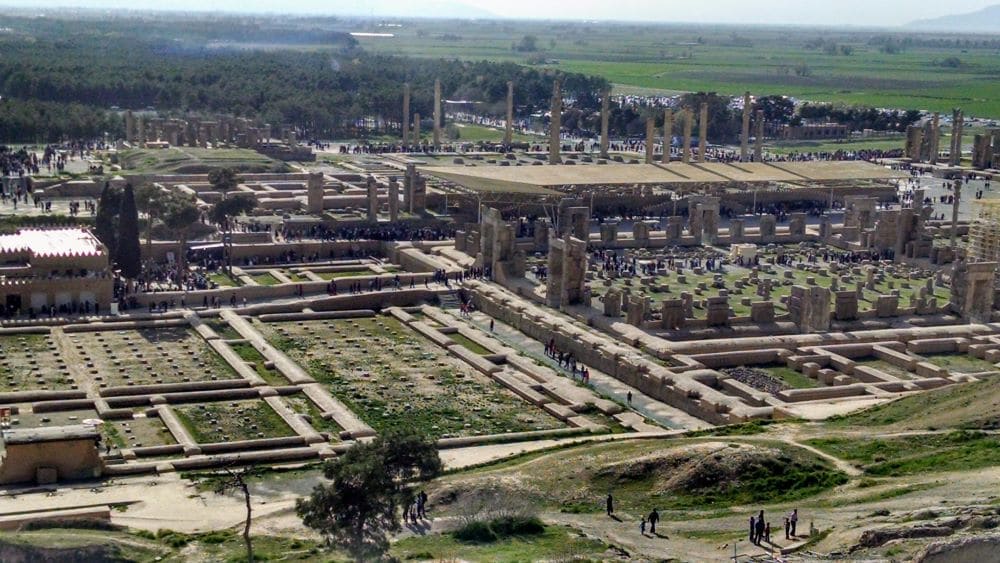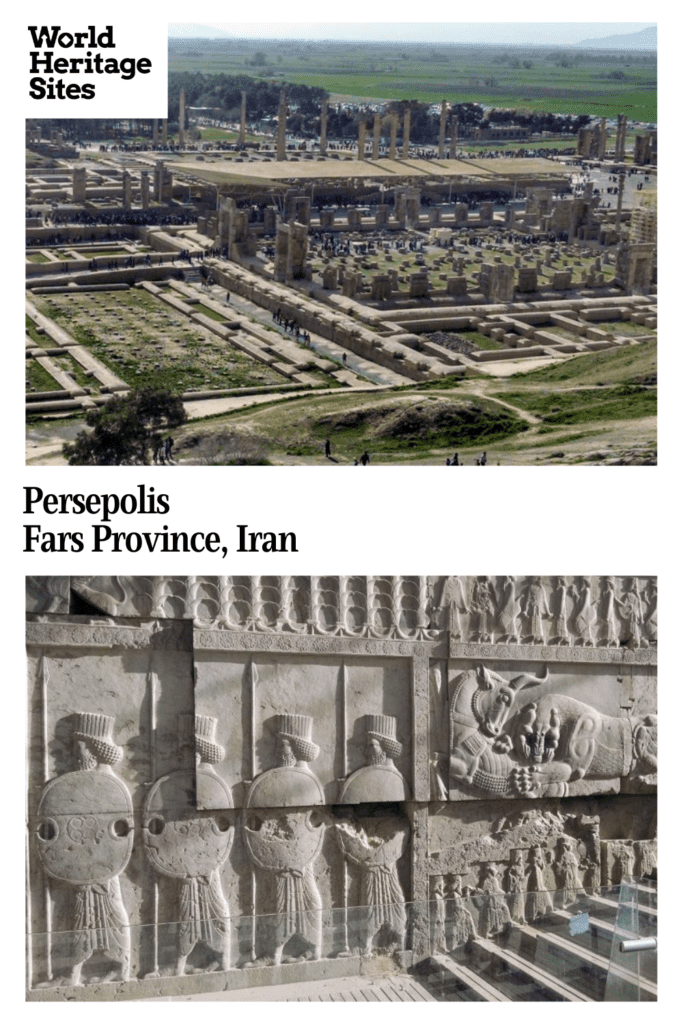Persepolis
By Abi & Patti
What is Persepolis?
Once home to a palatial complex, Persepolis is an historical site and archeological treasure approximately 30 miles (50 km) from Shiraz in southwestern Iran. It is located at the confluence of two rivers, the Pulvar and Kor.
It was the capital of the Achaemenid Empire from 518 BC until its destruction in 300 AD, a time frame of 800 years.

Why is Persepolis a UNESCO World Heritage site?
The ruins of Persepolis was designated a UNESCO site in 1979, primarily because of its historical significance and the majesty of the site, and because it was the capital of the Achaemenid Dynasty (518 B.C.) in Iran. It was primarily a showplace, but it did serve as the seat of government. According to UNESCO, the ruins are considered to be authentic in “locations and setting, materials and substance and forms and design.”

What can you expect on a visit to Persepolis?
At first glance, from a distance, Persepolis looks to be a wide swath of crumbling ruins, tall grasses and cliff tombs. Once up close, visitors are allowed to walk among the ruins following specific roped off areas, and they can actually reach out and touch some of the statuary, although it is discouraged.
Persepolis was built on a large, partially man-made terrace and over the centuries various kings added buildings that, together, formed a 13-hectare palace complex.
Persepolis is extraordinary to say the least. It is inspiring to walk among the ruins knowing the depth of history of the site. Some statuary is of course crumbling. The cliff tombs are primarily in place although obviously time and tourism has taken its toll. Visitors are allowed to climb the stairs up to the tombs, but cannot enter. Truly magnificent are the carvings still adorning the walls of the former palace.
For me, a western woman, visiting the site was an eye-opening experience to a culture that has endured for more than 2,500 years. Not only because of the history, but also because of the people. The Iranian people are some of the most hospitable people in the world, and they truly admire Americans. They have a keen interest in engaging with westerners and conveying a message of peace. To stand among the Iranian people, in a place of historical significance, makes for a powerful experience.

Is Persepolis worth visiting?
Yes. Persepolis is definitely worth visiting, with the caveat that Iran itself may not be everyone’s choice of travel destination. Visiting Iran is an extraordinary experience. The people, the culture, and the history make it worth visiting. The Iranian people are not representative of the government and they are open to engaging with westerners. The ease of travel to Iran depends on one’s country of origin. For example, US citizens must obtain a visa and can only travel with a sanctioned tour company, unless they have dual (US/Iran) citizenship. All travelers must abstain from drinking alcohol and all women travelers must adhere to the rules of hajib.
Travelers who can step out of what may be their comfort zone, and who have a profound appreciation of historical cities and sites, as well as unique cultural experiences, will definitely be rewarded by traveling to Iran.
Tips for visiting Persepolis
All travelers planning to visit Iran must meet visa/passport requirements.
Visitors to Persepolis should plan to spend several hours exploring the ruins. Many locals bring a picnic lunch as food service in the surrounding areas is limited.
Dress code: Men must wear long pants, while women must follow the rules of hajib.
At the time of our visit, there was no admission fee to explore the ruins.
The best time to visit is the months of April, May, October or November, before or after the heat of the summer months.
Where is Persepolis?
Persepolis is approximately 30 miles (50 km) from the City of Shiraz. The GPS coordinates are 40° 46′ 11.291″ N 73° 57′ 28.541″ W.
Most people arrive by car; parking is ample.
Public transit is available, but limited, so pre-planning is a must. Those who wish to visit should check with local contacts, hotel management and/or tour company.
Text and photos provided by Abi and Patti. They have been traveling through life together for 40+ years embracing each new chapter and each new adventure with open minds. Their travels have taken them to 4 continents – North America, Europe, Australia and Asia – and to date they’ve traveled to 19 countries. By sharing their journey on their website – One Road At A Time – they hope to inspire others to redefine retirement.
Have you been to Persepolis? If so, do you have any additional information or advice about this UNESCO World Heritage site? Please add your comments below!

